|
|
|
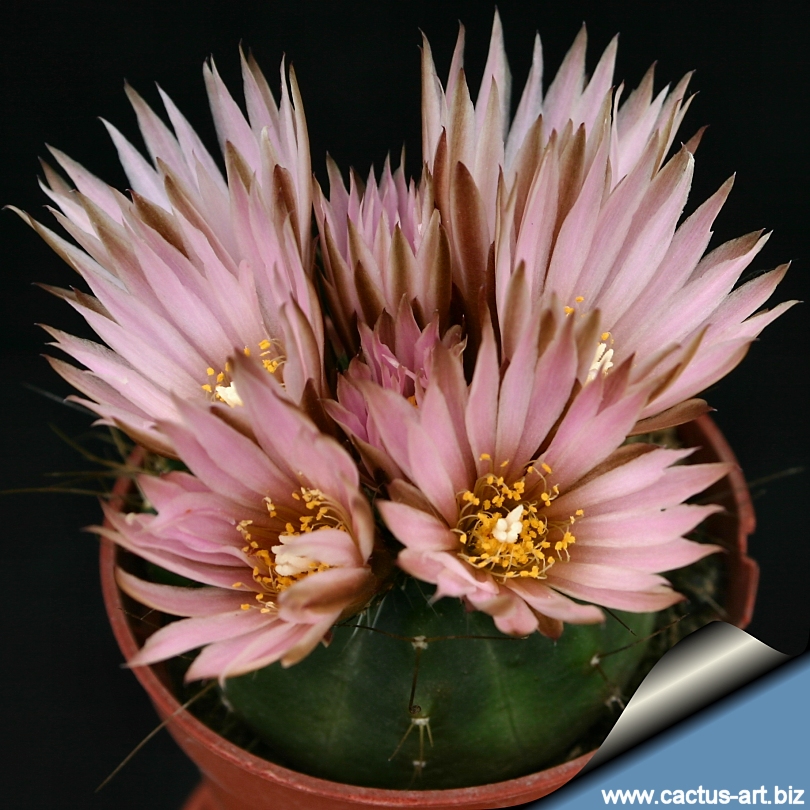
Echinocereus knippelianus
|
|
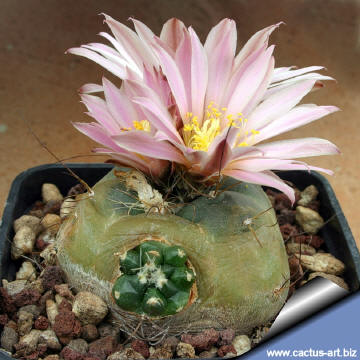 |
 |
|
A particularity of this plant is that the buds emerge
through the plant's skin above an areole, rather than arising from
areoles or axils between areoles as in other cacti.
|
|
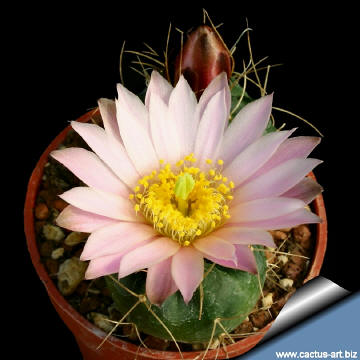 |
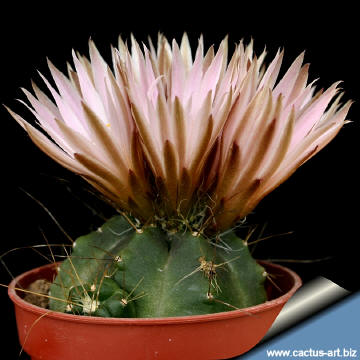 |
|
The pale
pink
flowers are
produced in spring. |
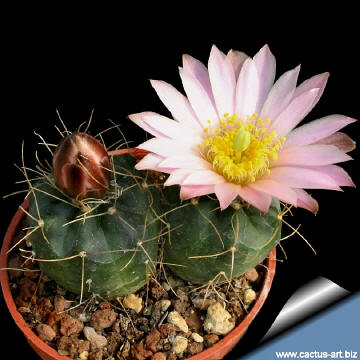 |
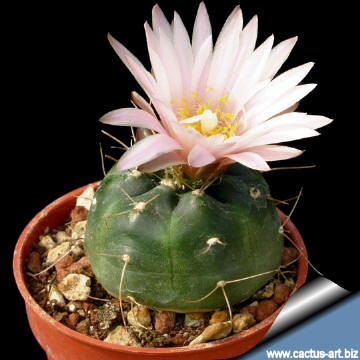
|
|
Advertising
|
|
|
|
|
Family:
Cactaceae (Cactus
Family)
Scientific name:
Echinocereus
knippelianus Liebner 1895.
TL:
Unknown [Relocated in Sierra Parras, Coahuila, Mexico].
Origin:
Mexico, Sierra Madre Oriental
Mountains (Coahuila, Nuevo Leon) at over 2200 m elevation.
Habitat: This high mountain cactus is found growing in the
semi-shade of rocks and pines.
Conservation status: Listed in
CITES appendix II.
Synonyms:
- Echinocereus liebnerianus* Liebner ex Schumann
1896b:262
nom. nud.
- Echinocereus inermis* Haage ex Hirscht 1898 pro syn.
- Cereus knippelianus (Liebner) Orcutt 1902
- Echinocereus knippelianus var. kruegeri Glass &
Foster 1978
- Echinocereus knippelianus var. reyesii Lau
1980b
|
|
Description: Solitary or
slowly clumping cacti.
Stem: Plump, soft, flattened or globose , dark green with
slightly lighter ridges, up to 10 cm tall, 8 cm in diameter.
Ribs: 5 to 7 ribs, either tuberculate or slightly wavy, separated
by broad furrows.
Areoles: Small with whitish felt, 5 mm
inches apart.
Spines: Nearly spineless, with
1 to 3 thin yellow spines, 3 to 15 mm long.
Flowers: Pink or white funnel-shaped flowers, 2.5-4 cm long, up
to 6 cm in diameter, appearance in spring and
summer. Flowers push through the body from the crown.
Fruit: Green berries near the stem tip
Root: Thick tuberous root that pulls the plant below ground to
avoid the hot sun.
|
|
|
|
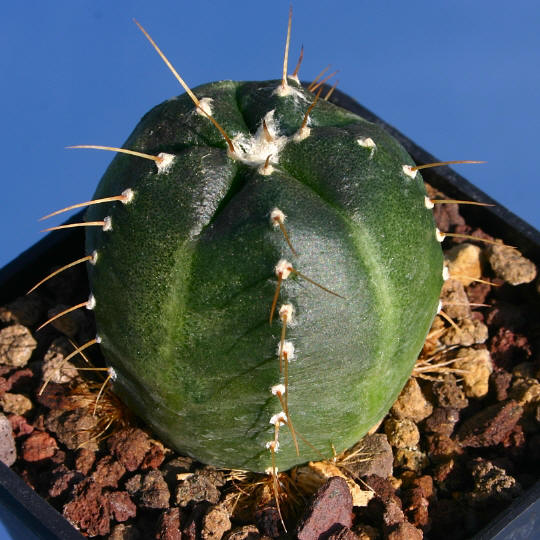
It is a plump green
species with few weak spines.
Cultivation: In culture
E. knippellianus is without problems and
regularly shows its pink flowers, if we provide an adequate winter
rest period. It is sensitive to over-watering (rot
prone), and needs good
drainage. Fertilize with half- strength liquid
fertilizer in summer. Keep drier and cool in
winter. Needs full sun. Very cold resistant,
hardy to -12° C or less for short periods of time.
Propagation: Seeds or cutting (if available)
Photo of conspecific taxa, varieties, forms and
cultivars of Echinopsis knippelianus.
-
E. knippelianus:
plump green body, big taproot, bristly spines. Pink flowers at the
sides.
-
E. knippelianus v. krugeri: miniature form with fat green
body, soft bristly spines, whitish or flesh-coloured flowers at centre
-
E. knippelianus v. reyesii: Fat green bodies, stiffer
spines. Larger, deep pink flowers at centre.


|
|
|